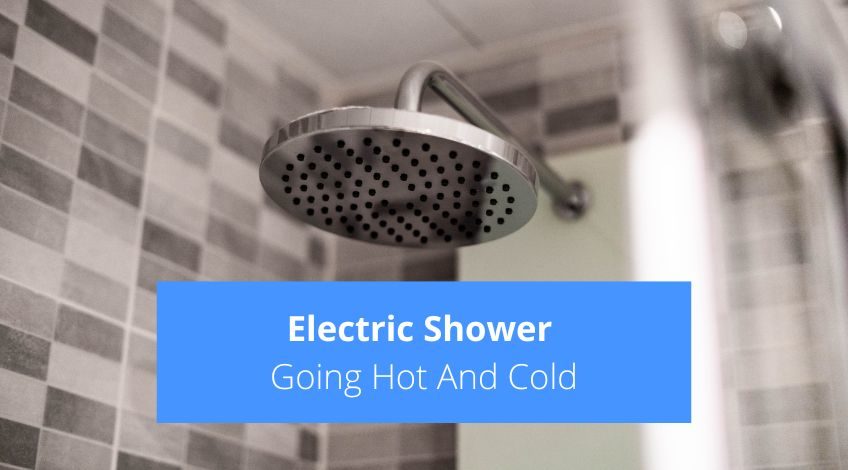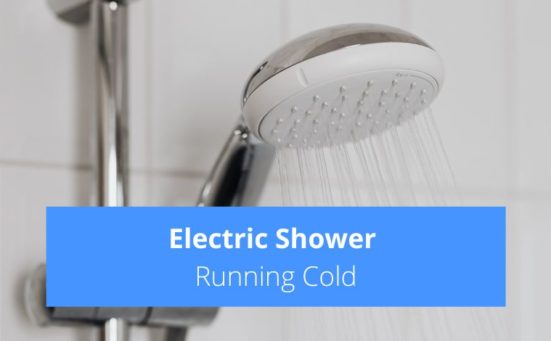
Electric Shower Going Hot And Cold? (here’s why & how to fix it)
The main reason for an electric shower fluctuating between hot and cold is almost always down to water pressure. In some cases, a limescale build-up or electrical faults could be the cause of this problem.
In this article, we’ll learn how to check water pressure, clean or replace parts that might be causing trouble, and learn when it might be best to call in a professional like a plumber or electrician. Keep reading to get your shower working properly again.
Why Is My Electric Shower Going Hot And Cold?
Many of us rely on our electric shower, they’re incredibly popular and generally work really well. But every now and then, we hear of problems where the electric shower temperature fluctuates, particularly going hot and cold.
As we said earlier this is almost always down to not enough water running through the shower. Now, there can be a number of reasons for this which we’ll get into in a minute. But first, we need to remind you about safety.
Electricity and water don’t mix and you should never tamper with any electrical device unless you are confident and competent in your abilities. If you have any doubts, we advise you to contact an electrician or a plumber.
Water Pressure

Your home’s water pressure must be at least one bar of pressure for an electric shower to function effectively. Coincidentally, local water authorities ensure a minimum pressure of one bar. This pressure level is sufficient to elevate water to a height of ten metres.
To check your water pressure, time how long it takes to fill a one litre jug using your shower head. If it takes six seconds or less, then the water pressure is fine. If it takes more than six seconds, you could have low water pressure.
But before you contact the water authority, run the same test from other taps in your home. The chances are, that the problem is the actual shower itself and not the whole home.
In addition to the typical checks, it’s worth looking at the mesh and valve that control the flow to your shower. Over time, these can get blocked with debris or start to wear out. Cleaning or replacing them could restore your water pressure to the ideal level.
Stopcock
The first place to start is the actual stopcock which supplies water to your shower. Check that it is fully open as it can only supply water at full pressure if the valve is fully open.
Shower Head

Inspect the electric shower head to see if it is clogged or partially blocked. The usual culprit here is limescale which could be blocking the small holes of the shower head. You can clear these using a cocktail stick or small needle inserted into each of the holes.
Shower Hose
At times, the shower hose may twist or get damaged. If twisted, it can restrict water flow, and damage may also reduce pressure. Shower hoses typically consist of two layers: an inner rubber or plastic hose encased in a steel hose.
It’s usually the inner hose which can be problematic, either twisted internally or leaking. Sometimes just replacing the shower hose could solve the fluctuating temperature problem.
Shower Inlet Filter
To inspect the inlet filter on the shower usually involves taking the shower apart and is probably best left to an expert.
Water Being Used Elsewhere
In some cases, if someone turns on the cold tap elsewhere in the house, like the kitchen sink, or flushing the toilet, it can reduce the water pressure in the electric shower.
Limescale

Another reason the water pressure could be too low in your shower, which can cause it to run hot then cold, is limescale. With more than 60% of the UK and around 85% of the US living in areas of hard water, limescale will eventually build up in your water pipes.
It is a build up of mineral deposits found naturally in the water which settle in the pipes, coating them with the forerunner to rock.
You can buy proprietary limescale removers which can be used to soak the shower head and shower hose. Additionally, regularly descaling your shower head and hose can prevent this problem.
However, the internal components of the shower can also become affected by limescale deposits.
If the shower head and shower hose are not the issue, and your home’s water pressure is fine, it is most likely to be the internal components of your shower which are at fault.
It is possible to replace individual components (we would recommend calling a plumber or electrician) or you might need to replace the whole shower unit.
Electrical Faults
There are a number of electrical faults which could cause the temperature to fluctuate in the shower. It could be any of the following;
- Faulty Heating Element
Electric showers heat cold water as it runs through the shower via an internal heater tank. The heating element inside the water tank in the shower can develop a fault which stops the water from heating. - Faulty Thermal Cut Off (TCO) Switch
The thermal cut off switch cuts in if the water in the tank becomes too hot. Once the water in the tank cools enough the TCO shuts down and allows the water heater to start up again. If the TCO is faulty it could cut in even when the water is not too hot. - Faulty Flow Valve
The water flow into your electric shower is controlled by a flow valve. If this develops a fault it will probably need to be replaced.
We advise you to contact an electrician and/or a plumber if you suspect any of these faults.
Remember, there are a number of reasons why your electric shower goes from hot to cold, and the best person to diagnose what’s causing the problem is either an electrician or a plumber.
SEE ALSO: Electric Shower Running Cold?
SEE ALSO: Here’s How To Make Your Electric Shower More Powerful
Frequently Asked Questions
If your shower gets cold and then hot again, it’s most likely to be caused because another tap is being used elsewhere in your home. For example someone turns on the tap in the kitchen or flushes the toilet.
If your electric shower turns cold quickly, it’s likely due to a faulty thermal cut-off switch. This switch is meant to stop the water from getting too hot. It turns off the heater if the water overheats and restarts it once the water cools to a safe temperature. A malfunction in this switch can make the shower go cold after a brief period.
If your electric shower turns cold after a few minutes, it’s likely due to a faulty Thermal Cut Off (TCO) switch. When the water in the shower’s internal tank gets too hot, the TCO cuts power to the heater until the water cools down. Then, the TCO restarts the heater. A malfunctioning TCO could explain why your shower only stays hot briefly.
Also, follow us on Pinterest ...



